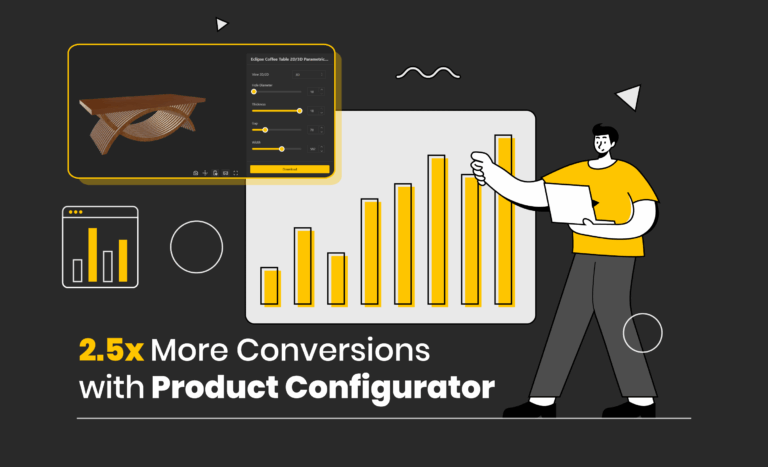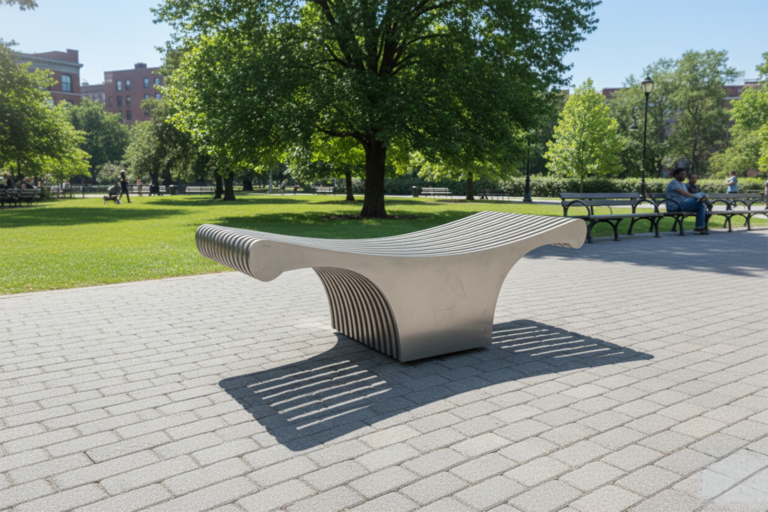Table of Contents
Imagine walking through your future home before a single brick is laid, or detecting construction clashes before they become expensive problems. With Augmented Reality in construction, this has become an actuality, enabling seamless visualization and error reduction across projects. With AR, architects, designers, and engineers are creating accessible platforms and interactive software that make construction visualization faster, more accurate, and incredibly immersive.
The global AR market is expected to grow from $38.56 billion in 2022 to an astounding $597.54 billion by 2030 – a sign of its growing importance across industries, especially augmented reality in construction. (Source: Grand View Research)
Augmented Reality in Construction: The future of Visualization
In today’s fast-paced urban environments, construction challenges are inevitable—from human error to machinery issues. But AR offers a solution, providing a clear vision of a project’s design, materials, and construction timeline. Companies using AR are ahead of the curve, predicting potential issues, saving time, and reducing costs by up to 20%, according to McKinsey.
Think about the Sagrada Familia – without AR, the vision of legendary architect Antonio Gaudi, from over 100 years ago, would have never come to life.

Sagrada Familia under construction – Photo by Enrico Perini
How AR is Shaping Construction: Latest Innovations
1. Microsoft HoloLens 2.0: Real-Time Collaboration
The Microsoft HoloLens 2 has transformed the construction industry by overlaying 3D models directly onto physical spaces. This mixed-reality device enhances collaboration between teams, allowing them to interact with 3D models and make real-time adjustments on-site. It’s a game-changer for remote work in construction, enabling global teams to work together seamlessly.
Imagine this: Contractors and engineers on opposite sides of the world can walk through the same construction site together in real-time—thanks to AR.
2. Apple Vision Pro: Elevating Precision and Immersion
Recently Launched Apple Vision Pro is already redefining how we experience AR in construction. This high-tech mixed reality headset provides a fully immersive, gesture-controlled experience. Designers and architects can walk clients through realistic 3D models of their future spaces, making precision adjustments along the way.
AR is no longer just a design tool; it’s becoming an immersive way to sell and market projects to clients with real-time walk-throughs.
3. Magic Leap 2.0: Optimized for Complex Projects
Magic Leap 2, launched in 2022, is tailored for enterprise-level applications and is gaining traction in construction. With enhanced depth perception and lightfield technology, this AR headset is perfect for large-scale construction projects, allowing workers to visualize multi-layered designs, map utilities like plumbing and electrical, and adjust on the fly.
From skyscrapers to metro lines, Magic Leap 2 gives construction teams the power to foresee challenges, manage resources, and speed up workflows.
Where does AR fit in the Construction Process?
Pre-Design Stage: Flexibility and Visualization
With Augmented Reality in construction, architects and engineers can preview a building in its actual environment before building starts. Using Building Information Modeling (BIM), AR helps fine-tune designs, identify potential flaws, and offer real-time adjustments. It’s perfect for collaborative projects where multiple teams must work in sync.
BIM meets AR: The design process is now gamified, accessible on the cloud, and open to real-time collaboration. Designers and engineers can walk through a building before it’s even built!
Planning Stage: Reducing Costs and Improving Efficiency
Once the BIM model is created, AR allows the project team to overlay a 3D model on the actual site, simplifying calculations and reducing the likelihood of expensive errors. This leads to fewer on-site mistakes and a smoother workflow.
According to McKinsey, Augmented Reality in construction can reduce costs by 10-20% by optimizing resources and preventing errors. For example, construction teams can overlay designs on existing roads, mapping out new highways or metro lines before even touching the ground.
Construction Phase: Real-Time Supervision
By overlaying BIM models onto ongoing sites, augmented reality in construction helps contractors, engineers, and construction teams compare the projected model with the real-time progress. This leads to better decision-making, improving communication by up to 40% (Source: AutoDesk). From plumbing systems to electrical ducting, AR ensures every element is precisely placed.
Real-Time AR: The Bionic Tower in Hong Kong used AR to adjust its design during construction when certain structural elements didn’t fit the initial plans.
The Marketing Power of AR
As projects near completion, Augmented Reality in construction becomes an invaluable tool for marketing. Clients and investors can walk through nearly completed buildings and visualize the end result. AR-based walkthroughs make projects more tangible for potential buyers, enhancing decision-making and building trust.
With devices like the Apple Vision Pro, clients can experience their new home or office before it’s even built, empowering them to suggest changes early in the process.
Overcoming AR Adoption Challenges
Despite the benefits of Augmented Reality in Construction, there are still barriers to widespread adoption. The high costs of hardware like headsets, the need for skilled technicians, and unstable internet connections in developing countries make it challenging to implement AR on all projects. However, the future is promising as costs decrease and technology becomes more accessible.
Beegraphy: Revolutionizing Collaborative Design
Beegraphy is a cloud-based design platform that takes the traditional design process to the next level through real-time collaboration. It integrates seamlessly with AR to enhance the creation and visualization process, making the perfect tool for architects, engineers, and designers looking to streamline their projects.
As AR reshapes construction, BeeGraphy: A cloud-based parametric design platform is bridging design and real-time collaboration in new ways. Architects, engineers, and designers can work on complex 3D models collaboratively, anytime and anywhere. With BeeGraphy, teams can view project models through AR, make immediate adjustments right from their browser, and adapt quickly to site changes, bringing greater accuracy and cost savings. As AR and computational design evolve, BeeGraphy is here to support the next generation of innovative construction workflows.














